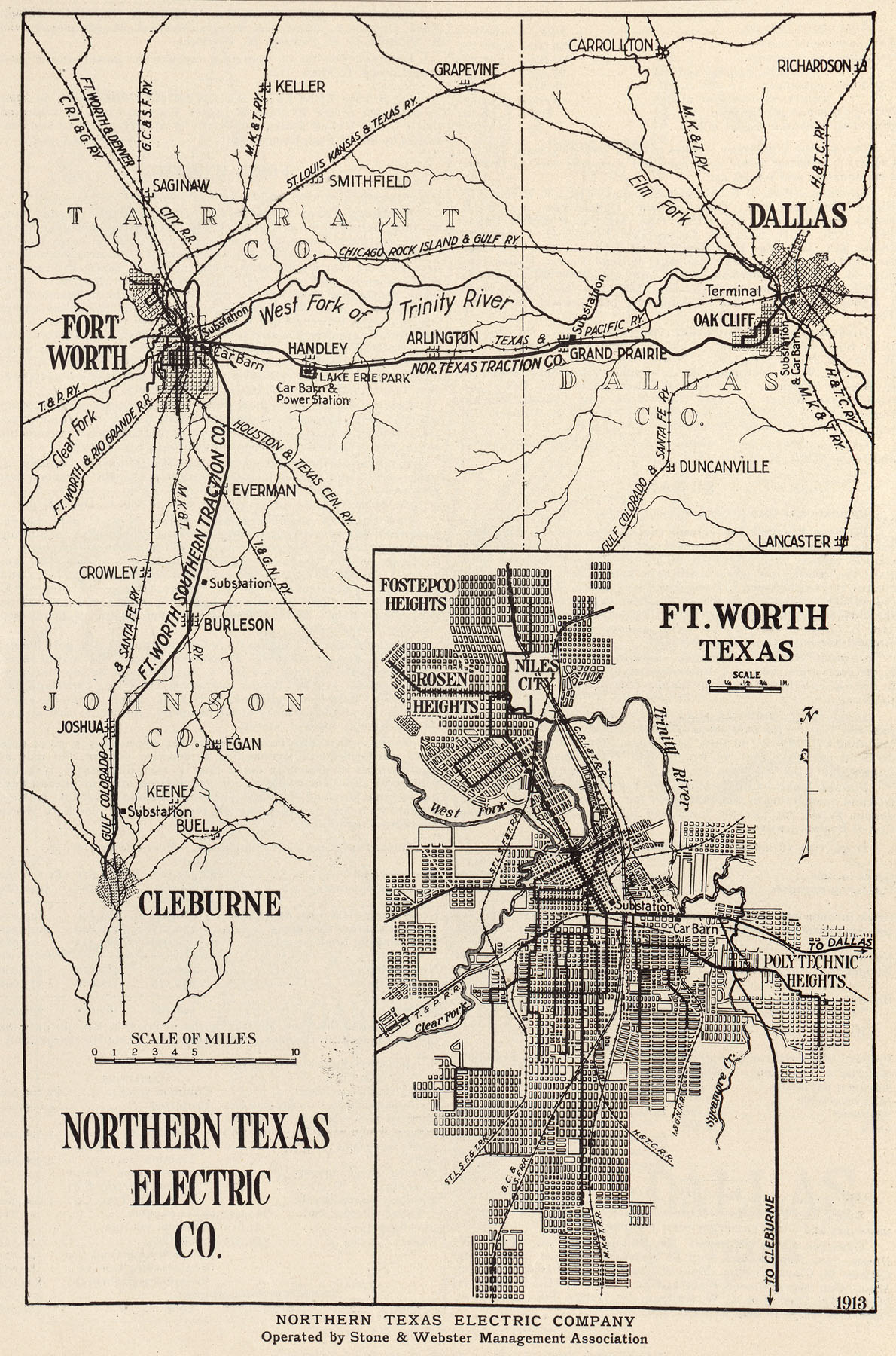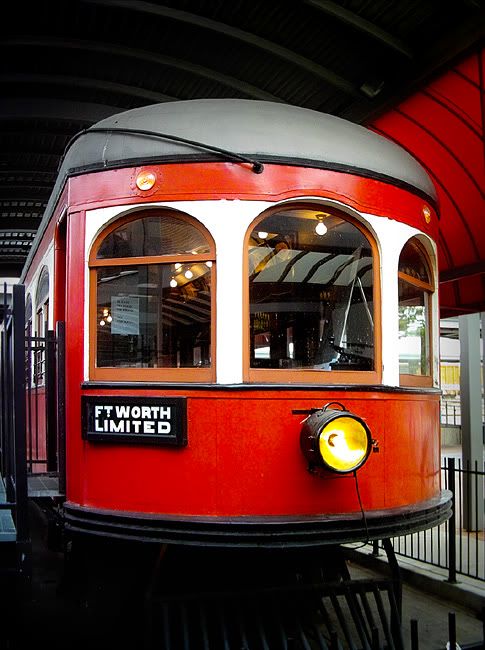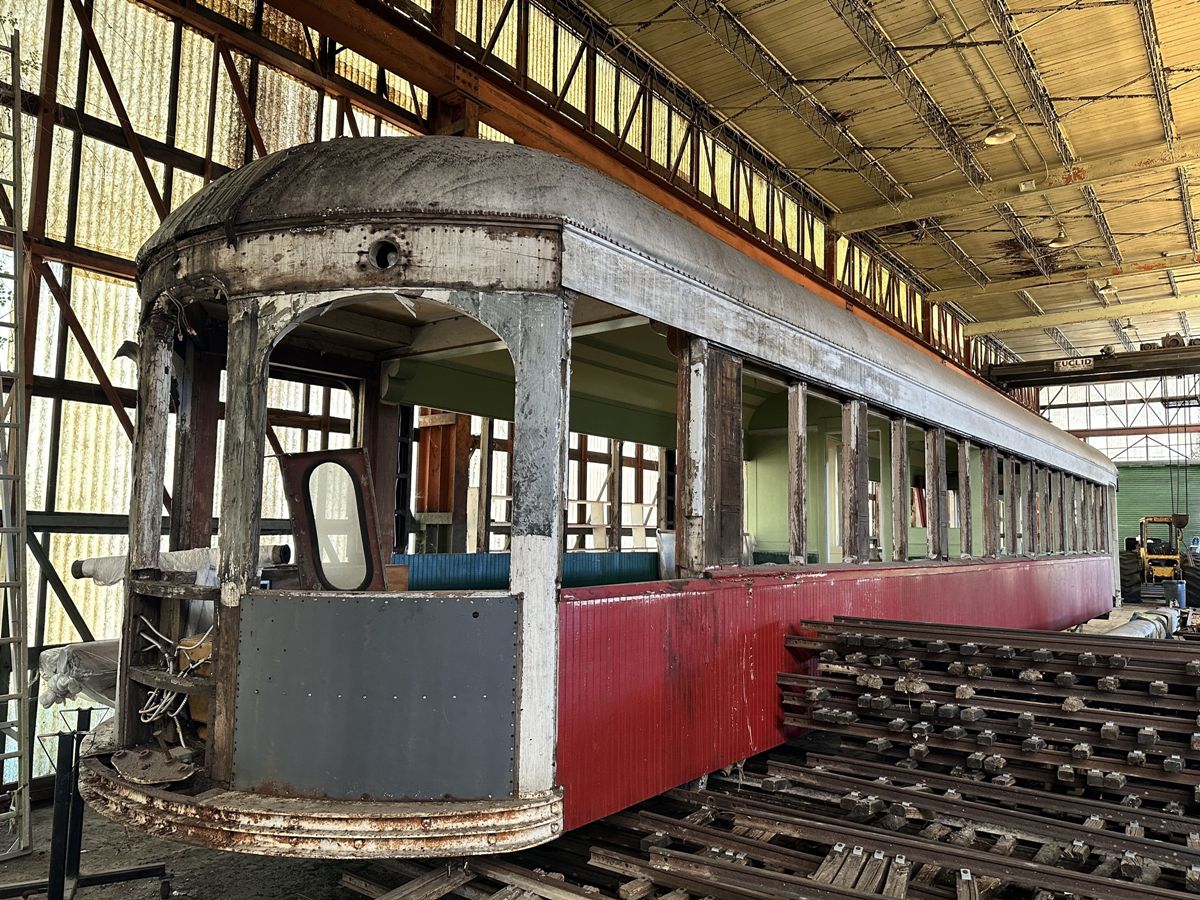
History http://www.tshaonlin...s/EE/eqe12.html
In 1901 the first interurban to be constructed in Texas, the Denison and Sherman Railway, ran ten miles between Denison and Sherman. The second, in 1902, was the Northern Texas Traction Company, which ran thirty-five miles between Dallas and Fort Worth. Operations ceased in 1934.
The Texas Traction Company constructed a sixty-five-mile line from Dallas to Sherman in 1908. The company purchased the Denison and Sherman Railway in 1911. In 1912 the J. F. Strickland interests, which controlled the Texas Traction Company, purchased the twenty-eight-mile line built by the Dallas Southern Traction Company from Dallas to Waxahachie and named it the Southern Traction Company. In 1913 that railway was built on to Waco, and a fifty-six-mile line from Dallas to Corsicana was completed. In 1917 the Texas Traction Company and the Southern Traction Company merged to form the Texas Electric Railway Company, the largest interurban railway in the South, with more than 200 miles of track. The Dallas-Corsicana branch was discontinued in 1941 and the Dallas-Waco and Dallas-Denison branches in 1948.
Texas Electric Railway map:

History:
http://libraries.uta...se01/txrail.htm
From 1916 until 1948, the Texas Electric Railway provided passenger and freight service to the citizens of North Central Texas. The railway combined the operations of the Texas Traction Company and the Southern Traction Company. With Dallas as its center, the railway operated three lines: one to Sherman and Denison, one to Ennis and Corsicana, and one to Hillsboro and Waco. These routes gave the Texas Electric 226 miles of track, making it the longest interurban west of the Mississippi River. While primarily a passenger line, Texas Electric Railway also offered mail and express service. In 1928, it began to haul freight as well and provided streetcar service in several towns that it served. The Texas Electric Railway was the last independent interurban line in Texas by 1942. While the line operated throughout World War II, ridership declined after the war due to the surge in private automobiles, buses, and trucks. The last run of the Texas Electric was on December 31, 1948.
Texas Interurban Railway Company
http://www.tshaonlin...s/EE/eqe12.html
History:
Smaller systems operated around Texas. The Texas Interurban Railway Company had two lines, a twenty-nine-mile run between Dallas and Terrell from 1923 to 1932 and a thirty-eight-mile run from Dallas to Denton from 1924 to 1932.
Fort Worth Southern Traction Company
http://www.tshaonlin...s/EE/eqe12.html
History:
The Fort Worth Southern Traction Company opened thirty miles of track between Fort Worth and Cleburne in 1912. This company was reorganized in 1914 as the Tarrant County Traction Company, which was subsequently acquired by the Northern Texas Electric Company. The latter became the Northern Texas Traction Company, which closed the line in 1931.
Edited by AndyN, 16 July 2009 - 10:34 AM.
Split from SW2NE Thread





























